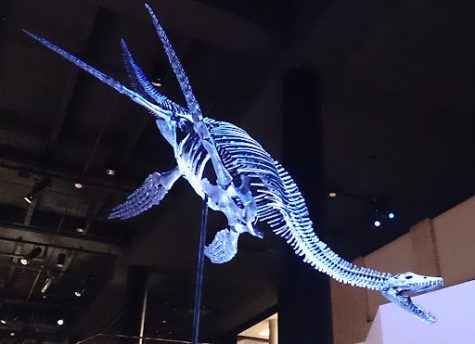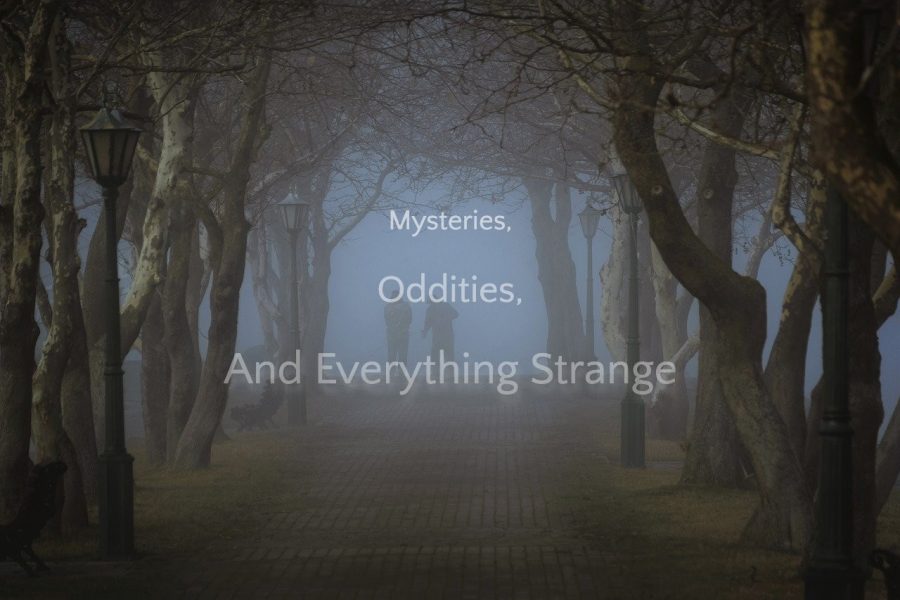Mysteries, Oddities, and Everything Strange: Loch Ness Monster
November 12, 2021
Loch Ness Monster: A Modern Day Dinosaur
In the depths of Loch Ness, a freshwater loch in the Scottish Highlands, there lurks a strange creature, one that many have attempted to capture through photography or video recordings. This being, known as the Loch Ness Monster or Nessie, is one of the most widely known cryptids in the world. Is this water dwelling monster a dinosaur preserved for millions of years or just an oddly large fish? Is it a giant eel or just a piece of plastic? Much remains unanswered when it comes to the “nitty gritty” of this sea beast.
 Strange beings in the depths of Loch Ness have been recorded for thousands of years. The first report of a monstrous sea dweller came from the year 565 AD, when Saint Columba described the monster’s rampage before he calmed it and instructed it to return to the water. Nessie gained popularity through a more recent 1933 sighting, where a couple witnessed the monster dive into the water after crossing the road directly in front of them. From there, footprints were discovered by a big game hunter known as Marmaduke Wetherell, but later identified as a hoax that utilized an ashtray to create such footprints. Sightings have flooded in since then, including sonar readings, films, video. Google Street View even added a small easter-egg in the loch, where users can explore it above and below water through the use of a boat and a collaboration with a sea surveying corporation.
Strange beings in the depths of Loch Ness have been recorded for thousands of years. The first report of a monstrous sea dweller came from the year 565 AD, when Saint Columba described the monster’s rampage before he calmed it and instructed it to return to the water. Nessie gained popularity through a more recent 1933 sighting, where a couple witnessed the monster dive into the water after crossing the road directly in front of them. From there, footprints were discovered by a big game hunter known as Marmaduke Wetherell, but later identified as a hoax that utilized an ashtray to create such footprints. Sightings have flooded in since then, including sonar readings, films, video. Google Street View even added a small easter-egg in the loch, where users can explore it above and below water through the use of a boat and a collaboration with a sea surveying corporation.
Arguably the most famous piece of evidence supporting the existence of the Loch Ness Monster comes in the form of the “surgeon’s photograph,” claimed to have been taken by Robert Kennent Wilson. The photograph supposedly displays the first recorded evidence of the creature’s head and upper body, and is what is most commonly associated with the urban legend. Wilson sold the image to the London Daily Mail, and it quickly spread like wildfire. It was regarded as stone cold evidence until questions began to emerge about its origin. Closer examination revealed that what looked like large waves were simply ripples, and an un-cropped version of the photograph confirmed what most Loch Ness Monster truthers had dreaded – it was a hoax. It was reportedly a toy submarine constructed by Christian Spurling, who, together with Wetherell, had concocted a plan to shame the newspaper that had embarrassed him and his account. Since 1994, the surgeon’s photograph has been debunked in the realm of Loch Ness lore.
the “surgeon’s photograph,” claimed to have been taken by Robert Kennent Wilson. The photograph supposedly displays the first recorded evidence of the creature’s head and upper body, and is what is most commonly associated with the urban legend. Wilson sold the image to the London Daily Mail, and it quickly spread like wildfire. It was regarded as stone cold evidence until questions began to emerge about its origin. Closer examination revealed that what looked like large waves were simply ripples, and an un-cropped version of the photograph confirmed what most Loch Ness Monster truthers had dreaded – it was a hoax. It was reportedly a toy submarine constructed by Christian Spurling, who, together with Wetherell, had concocted a plan to shame the newspaper that had embarrassed him and his account. Since 1994, the surgeon’s photograph has been debunked in the realm of Loch Ness lore.
So, if not an absurd sea monster, what could Nessie actually be? People have attempted to use science to explain Nessie’s legend, including swimming elephants, bird wakes, optical illusions, and even seismic gas. One of the most popular explanations reaches into the legends of the people around the loch and their folklore. Local tales describe water horses that reside in the loch and drive children away so as to shield them from any danger. Others are eager to  jump to more bizarre reasoning, and from there the existence of a dinosaur was proposed. Nessie’s general bodily structure, shambled together by the countless reports, resembles that of a plesiosaur. It has a long neck, plump body, and four fins that it would use to propel itself through prehistoric waters. This explanation has been proved impossible due to the fact Loch Ness is quite young in geology at 10,000 years old, unable to support the existence of a creature that is millions of years old.
jump to more bizarre reasoning, and from there the existence of a dinosaur was proposed. Nessie’s general bodily structure, shambled together by the countless reports, resembles that of a plesiosaur. It has a long neck, plump body, and four fins that it would use to propel itself through prehistoric waters. This explanation has been proved impossible due to the fact Loch Ness is quite young in geology at 10,000 years old, unable to support the existence of a creature that is millions of years old.
The Loch Ness monster isn’t as daring or dangerous as other mysterious creatures, keeping to itself in the depths of its 22.5-mile-long dwelling. The mystery of the Loch Ness Monster is still one shrouded in mystery and intrigue. Although most well known evidence of Nessie has been debunked or is in the process of doing so, there still remains plenty of believers who are confident in its existence. Is Nessie still alive, lurking in the depths of a lake in central Scotland? Is it nothing but a myth manufactured by countless people mystified by its wonder? Or is it just an eel, going about its daily activities, mistakenly sparking a curious craze? Unless we drain Loch Ness itself, the existence of the Loch Ness Monster is and might forever be a mystery.
Resources:
https://en.wikipedia.org/wiki/Loch_Ness_Monster
https://www.britannica.com/topic/Loch-Ness-monster-legendary-creature














































